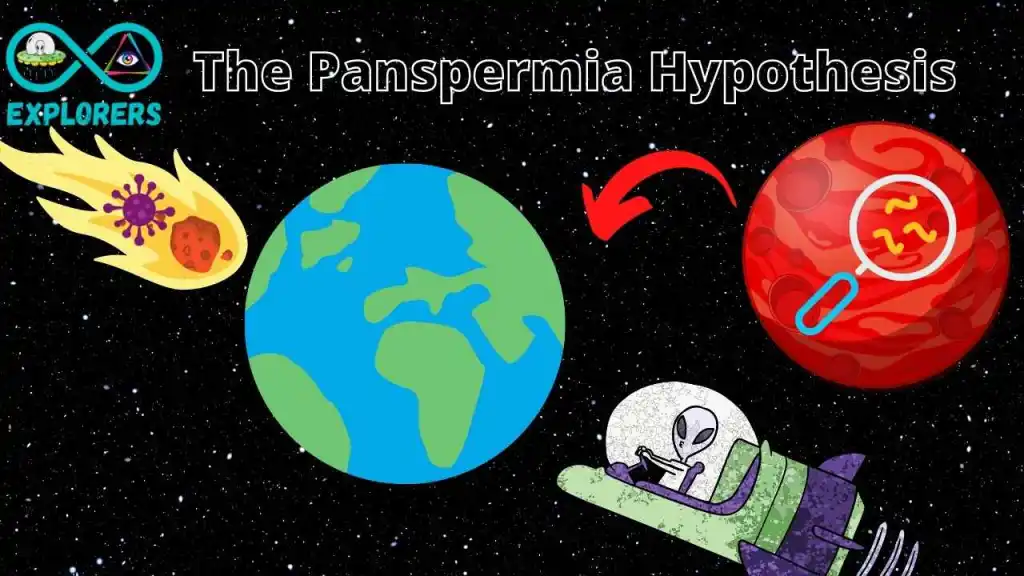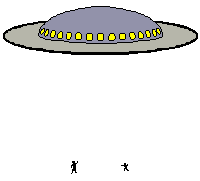
With more and more discoveries with each passing year, the chance of life originating from outer space has grown. Along with that, the panspermia hypothesis has risen in plausibility over the years which suggests that maybe humans could just be ancestors from Mars or derived from asteroids or comets.

Carl Sagan, a world-renowned astronomer, once stated that the nature of life on Earth and the possibility of life beyond Earth are two sides of the same coin. Both issues are answered in the case of the panspermia hypothesis.
The panspermia hypothesis implies that life exists outside of Earth and that life as we know it on our planet originated outside of our atmosphere. The spokesperson of the Panspermia asserts that a variety of astronomical objects, including other star systems, asteroids, comets, and even Mars, contributed to the origin of life on Earth.
What is the Panspermia Theory?
Panspermia is a long-standing concept that dates all the way back to the ancient Greeks. In modern times, prominent astronomers such as Chandra Wickramasinghe and Fred Hoyle have backed this hypothesis.
Although no clear evidence has been shown to date to support this concept, significant discoveries have occurred during the last century that makes panspermia more feasible. Some of the most compelling evidence from recent findings indicates that humans or some other beings may have lived on Mars in the past.
Another line of evidence that lends support to the panspermia hypothesis is the fact that the earliest incontrovertible evidence of life in the geologic record occurs around 3.8 billion years ago, close to the end of the Late Heavy Bombardment (LHB). The LHB was a period of time during which the rate of collisions between planetary bodies in the solar system was much higher than it is today.
Many say that any life on Earth before the LHB would have been wiped off, implying that modern life as we know it would have required an extraterrestrial origin. This is just speculation, but when compared to the timing of the advent of life on Earth, it lends weight to the argument.
Did the Human Life really come from Mars?
A meteorite was discovered in 1984 in Antarctica’s Allan Hill region. It was simply labeled ALH84001, and for the following decade, it went practically unmentioned and drew little curiosity. In 1994, it was determined by geochemical and microscopic research that the meteorite was of Martian origin and that it was also a particularly unique Martian meteorite.
The meteorite was discovered to contain complex chemical molecules called polycyclic aromatic hydrocarbons (PAHs), which are typically linked with microbial activity.
Additionally, they discovered iron sulfide combined with magnetite; ordinarily, these two minerals do not coexist in the presence of carbonates unless they are created by life.
Additionally, the scientists who examined the meteorite discovered strange-looking nanostructures in the shape of rods that bore a strong resemblance to certain species of bacteria. These three unique finds within the meteorite caused many experts to believe they were proof of possible Martian life.

These new revelations about the ALH84001 meteorite compelled several scientists to re-examine it and express renewed interest in it. Over time, the data that appeared to support the idea of life on Mars has been questioned by many who have supported a non-biological origin.
PAHs may readily form in non-biological environments when organic molecules are heated, and the rod-like entities resembling bacteria are likely too tiny to have ever been living organisms.
However, magnetite and iron sulfide are still regarded to be evidence for the presence of biology in ALH84001, as many of the magnetite grains have the same shape and size as bacterium grains.
There is currently no known process for the formation of magnetite granules of that kind in combination with iron sulfide in the absence of biology. The question of whether or not life existed on Mars will likely remain unanswered until a sample return mission is accomplished in the 2030s.
More evidence is accumulating to support the hypothesis that Mars was once a wetter, more hospitable planet where life could have thrived in the distant past, but this is far from conclusive at the moment. Even if it is shown that life existed on Mars, the possibility that life originated on Mars could have seeded life on Earth carries further consequences.

According to scientists, there are two major concerns about the prospect of Mars life seeding life on Earth. The first is whether any form of life could have survived the trip from Mars to Earth. The second difficulty is that there are grounds to suppose that life would have developed more probable on Mars than on Earth first. Surprisingly, both questions may have a yes response.
Even if bacteria survive the impact event and the highly hostile environment of outer space, would they be able to survive the millions of years of trek from Mars to Earth? Interestingly, bacterial spores found from extinct bees trapped in amber and brine inclusions in ancient salt crystals indicate that viable bacterial spores can survive for up to 250 million years.
However, a brine or amber inclusion in a terrestrial salt crystal is still a mild environment in comparison to the inside of a Mars collisional fragment wandering across space.
Additionally, scientists indicated that they had cause to assume that life could have formed on Mars initially, rather than on Earth. While water is necessary for life as we know it, the presence of water inhibits the production of the building components of life. Earth’s very early history indicates that it was almost covered in a worldwide ocean.
Mars, on the other hand, experienced periodic wet and dry phases during its early history.
According to a current idea for the origin of life, life began in shallow bodies of water, or pools, that were repeatedly exposed to sunlight and dried out on a periodic basis. This would have resulted in the steady accumulation of organic molecules with each dry cycle, eventually forming layers of complex organics that may become the building blocks of life.
Due to the fact that Mars was unlikely to have been covered in a global ocean and to have had periodic wet and dry seasons, it may have been easier for life to form on early Mars than on Earth. There is currently a substantial body of scientific evidence indicating that this is a very credible theory. For all we know, the human race may be entirely composed of Martians.
ThePossibility of Life Coming from Comets or Asteroids
Another prevailing theory among those who believe in the panspermia hypothesis is that of comets and asteroids. Chandra Wickramasinghe, an astronomer, and mathematician argue that life most likely originated in the innards of comets.
He continuously contended that the trillions of cometary objects predicted to exist in the solar system present a lot greater possibility for the formation of life than the early Earth’s environment did.
Another possibility suggested is that a comet may have been infiltrated with life while passing through the upper atmosphere of a life-rich planet, allowing life to implant itself on the comet without the comet having formed. This theory does not contribute to our understanding of how life could have started; rather, it pushes the issue further back in time and to a separate planetary body about which we know little or nothing.
If comets did bring life to Earth, they almost certainly brought water with them. While it has long been assumed that comets produced the water on Earth, isotopic examinations of comets have revealed that many of them have a different deuterium-hydrogen ratio than the water found in Earth’s seas.
Recent research on comets indicates that some of them have persistent deuterium-hydrogen ratios similar to those found in Earth’s oceans, implying that comets may be the source of some of the planet’s water, life, and organics.

Another possibility for the origin of life is asteroids, which are stony rocks found primarily between the orbits of Jupiter and Mars. The majority of asteroids are thought to be remnants of protoplanetary bodies the size of Vesta, which is around 530 kilometers (321 miles) in diameter.
These primordial parent bodies of asteroids would have been annihilated in massive collisions during the solar system’s early years. The majority of what we now know about the composition of asteroids comes from the study of meteorites, the majority of which are composed of asteroids.
Numerous analyses of meteorites indicate that the asteroid parent bodies were massive enough and had sufficient radioactive isotopes in their interiors to undergo complete differentiation or at the very least metamorphism. Numerous meteorites have exhibited signs of aqueous alteration in the interiors of their parent bodies, indicating that they were sufficiently hot to contain liquid water.
Numerous meteorites have been discovered to be abundant in chemical compounds, including amino acids. Numerous asteroid and meteorite parent bodies may have had interiors that were chemically similar to the environment in which life is believed to have originated on Earth and even Mars.
The indisputable evidence of water modification, particularly the presence of organics and clays in asteroidal meteorites, bolsters the panspermia hypothesis’s case for striking asteroids being a likely source of life on Earth.
We must emphasize that this is just supposition at the moment; no evidence has been established that life originated from asteroids or comets, although recent advances in the study of comets and asteroid research strengthen the panspermia idea significantly.
Did Life Come From Other Star Systems?
To begin, most scientists questioned whether bacteria contained within dirt clods or microscopic rocks could survive the vast distances between the stars, especially considering that a journey may take hundreds of millions or perhaps billions of years.
Additionally, it was believed to be exceedingly improbable that any objects from other star systems would ever approach a planet in an alien star system close enough to collide with it. This opinion has shifted significantly in recent years, owing largely to the discovery of two interstellar bodies that traveled through our solar system in the previous several years.
The first is Oumuamua, a Hawaiian name that translates as “first messenger from afar.” Oumuamua was found in 2017 by astronomers using a telescope owned by the University of Hawaii. In 2019, the second object, 2I/Borisov, was discovered.
This was a more normal object, resembling comets from the nearby solar system in all but its hyperbolic orbit. Scientists continue to debate the nature of Oumuamua; it has been described as everything from collisional debris of an exo-Pluto to an alien light sail. As expected, the planetary science community prefers the first description.
The significance of both 2I/Borisov and Oumuamua is that they were both discovered within two years of one another. This indicates that passing interplanetary objects are significantly more common than previously believed.
This has resulted in many scientists becoming more receptive to the prospect of life traveling not only between planets within the same solar system but potentially between solar systems. If life is not limited to a single solar system until a technological species becomes capable of interstellar travel, it is possible that interstellar space, rather than being devoid of life as previously assumed, could be teeming with it.
Current scenario of the Panspermia Hypothesis
Since the panspermia hypothesis was initially considered as a possible scientific explanation, it has been contentious, to say the least. Recent findings and technological advancements have redeemed the panspermia concept, indicating that it is a strong probability.
Although no evidence has been revealed to demonstrate that life exists on other worlds, each new discovery increases the likelihood that life may soon be discovered beyond Earth. The one remaining uncertainty is whether, if we do discover life outside of our planet, it will be utterly unlike any other life we have encountered, or will it be identical to ours?
What do you think of the Panspermia Hypothesis? Tell us below.
Please remember we all have different opinions, Think Before You Speak or Write Something that is cruel to Others. After all, We are only Humans. Wishing you clear skies and wide eyes. To share your experiences or just leave a comment there is a area below. Read or listen.
We are the change the world has been waiting for!
Have you witnessed an unidentified flying object?
You are not alone. Whether you think UFOs are black projects, extraterrestrial craft, something else altogether, or just don’t know, again, you are not alone!
Unconditional love. The road we all get to walk. Unconditional love is like the sun.
WE ARE THE DISCLOSURE !~ WE HAVE NEVER BEEN ALONE
Love and Regards,
Thank You,
Nancy Thames
Source:




Hello! As I mentioned many times before life was created by Elohim scientists a long time ago on Earth and the assumption that early life evolved on other worlds must be the result of terraforming by a highly advance humanoid race that had or still has science and technology to aid them in their life creating methods.I would not be surprised if they were atheists just like the Elohim are today.The fact that life only reached a point of single cell life and didn’t advance any further was probably the case that something went wrong during the process and the experiment was a failure not do to evolution but a lack of consistancy in their collective efforts.If we find that this was the case on the planet Mars of the past than we could pick up where they left off and create a habital environment for us to live in not to mention create life just as our ET creators the Elohim did a long time ago.It should be a main goal for NASA to do this on other worlds in our solar system and beyond.If this goal isn’t in the Artemis accords it should be do to taking after are ET creators footsteps.We have the potential within us let us not waste it when we set foot on these other worlds to stay.